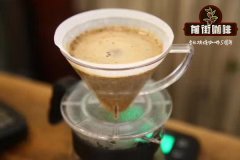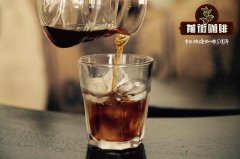Kenya 72 hours washing process Kenya washed coffee beans characteristics

Professional coffee knowledge exchange more coffee bean information please follow the coffee workshop (Wechat official account cafe_style)
72-hour washing in Kenya
Kenyan coffee processing methods are particularly complex, which is why Kenya is famous for its unique, high-quality coffee. It consists of two separate fermentation stages and a long soaking stage to produce its coffee.
The first step is to determine the relative density of the coffee bean itself, which can be done by using a special McKinnon hair removal device. Density can well indicate the quality of beans is good and poor, because poor quality beans will float on the depilation device, while good quality beans will sink. This allows them to be transported through different channels, with lower-quality beans being transported separately and higher-quality beans sent directly to the fermentor.
The primary fermentation starts here and lasts for 24 hours. At this point, the beans are washed out of the loose mucus and sent back to the fermentor to ferment again within the next 12-24 hours.
Now, fermented beans take up to six hours to wash, in which bacteria, yeast mucus and other solids are removed. Any beans floating on the surface, indicating that they are of poor quality, will be lost and disposed of.
Finally, the beans should be soaked under water for 24 hours. As the content of amino acids and proteins in each bean increases, more complex acids are produced in the beans.
The device, known as the "skin bed", is used as a pre-drying process to quickly remove the large amount of water accumulated by beans outside the fermentation process through a complex cleaning and soaking process. The beans are spread thin in the sun, allowing natural factors such as sunlight and wind to quickly evaporate moisture. Leave them here for another 6 hours until they are completely dry.
During the final drying stage, the coffee is placed on a raised drying bed for 5 to 10 days. The total drying time depends to a large extent on atmospheric conditions such as wind, clouds and relative sunlight.
The difference with the Kenyan method is that it allows all coffee to breathe normally when it dries. They use "bodegas" to dry coffee in cages. In many other places, dried beans can be put in bags, which will make the beans sweat and give them an unusual taste.
END
Important Notice :
前街咖啡 FrontStreet Coffee has moved to new addredd:
FrontStreet Coffee Address: 315,Donghua East Road,GuangZhou
Tel:020 38364473
- Prev

Colombian Coffee Variety Distribution what kind of coffee in Colombia
Professional coffee knowledge exchange more coffee bean information please follow the coffee workshop (Wechat official account cafe_style) Colombian coffee Colombian coffee was first introduced by Jesuits in 1723. As a commercial crop, it slowly spread all over the country, but its yield did not become important until the end of the 19th century. Traceability as a promotion of Goran
- Next

How to choose the brand of coffee beans by hand? how can fresh coffee beans taste good?
Professional coffee knowledge exchange more coffee bean information please follow the coffee workshop (Wechat official account cafe_style) front street-fresh coffee beans, brewing methods brief introduction fresh coffee beans definition will vary due to ring temperature, humidity, packaging, preservation methods. In terms of environmental conditions in Taiwan, coffee beans are stored in an one-way breathable bag and placed at room temperature.
Related
- Beginners will see the "Coffee pull flower" guide!
- What is the difference between ice blog purified milk and ordinary milk coffee?
- Why is the Philippines the largest producer of crops in Liberia?
- For coffee extraction, should the fine powder be retained?
- How does extracted espresso fill pressed powder? How much strength does it take to press the powder?
- How to make jasmine cold extract coffee? Is the jasmine + latte good?
- Will this little toy really make the coffee taste better? How does Lily Drip affect coffee extraction?
- Will the action of slapping the filter cup also affect coffee extraction?
- What's the difference between powder-to-water ratio and powder-to-liquid ratio?
- What is the Ethiopian local species? What does it have to do with Heirloom native species?

